NEVER TEAR YOUR PEC TENDON WHILE BENCHING | 3 ESSENTIAL TIPS!
Fix Your Bench Press Mobility
By now I am pretty sure all of you have seen the gruesome pec and biceps tendon tear Ryan Crowley sustained while incline benching with Larry Wheels. If not, you can see my response video RIGHT HERE. But essentially what happened is that Ryan decided to max out his incline bench press despite the many red flags that indicated his body was just not prepared for such a heavy lift.
Now before we get started it looks like Ryan is already in recovery from surgery, he’s doing ok and even though his injury is the result of just plain stupidity…we all make mistakes and I’m sending nothing but positive vibes Ryan’s way. But that doesn’t mean we can’t take this opportunity to turn his injury into a teachable moment.
I actually saw a lot of comments on my response video, which I’m sure the majority of them were not 100% serious, but it seemed like after watching the pec tear quite a few of you are now a bit nervous when benching because you feel a bit of tension or tightness in your chest and shoulders. So, let’s take some time today to go over THREE TIPS to help you not only increase your shoulder mobility, but also correct your bench press form so you can bring that barbell all the way down to your chest.
TIP #1 - Shoulder Warm-Ups
It should go without saying that if your shoulders are tight, then there’s an issue that needs to be addressed. So before you even think about benching, you best be doing at least 2 to 3 of the following shoulder warm-ups.
My go-to shoulder warm-ups are Dumbbell Shoulder Rotations (NEVER do standing) and Shoulder Breakers. They’re very easy to do and you typically only need about 2 sets of about 12 to 15 reps of each warm-up to start feeling loose.
For the Dumbbell Shoulder Rotations, the key here is to never let your shoulder come up off the ground as you rotate your arm back and forth. Use a LIGHT dumbbell and do not “force” the range of motion.
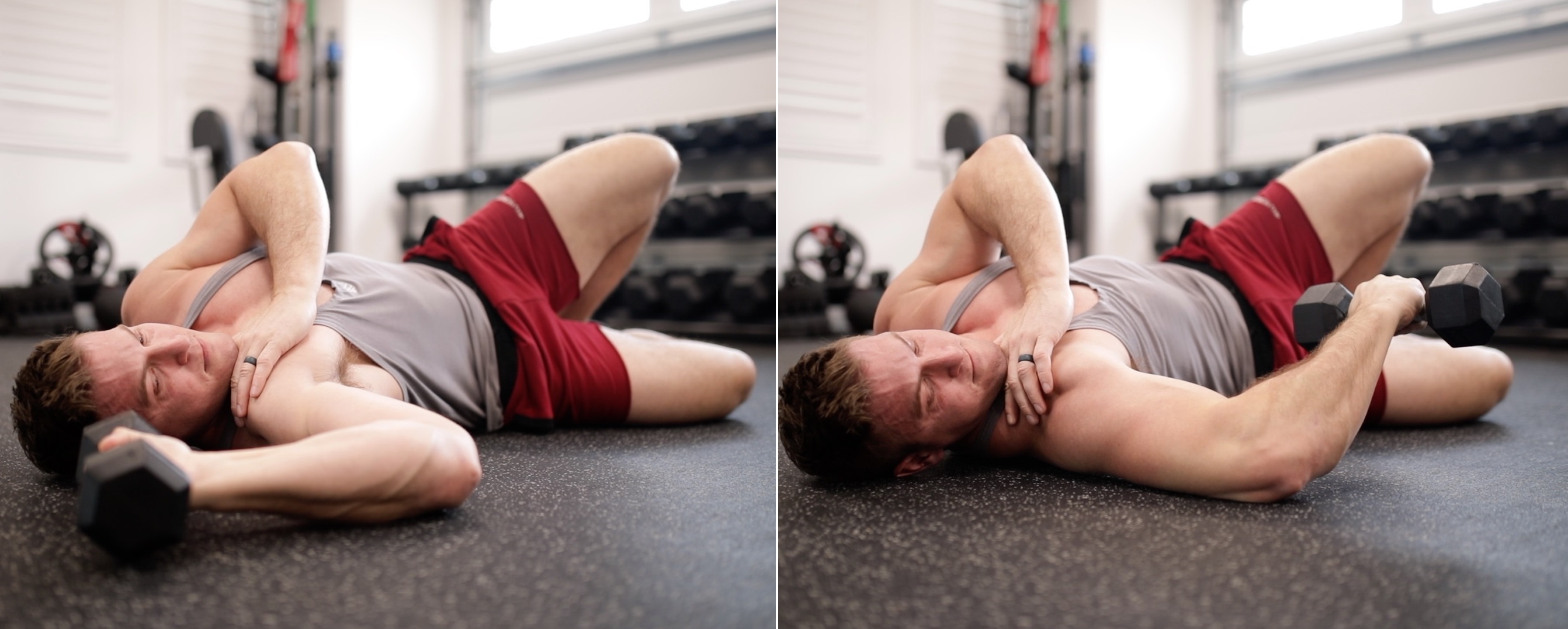
Just focus on keeping your upper arm extended away from your body and keep a 90 degree bend in your elbow.
As for Shoulder Breakers, grab a band and hold it close enough so you can create some tension by pulling your hands apart.

Then just simply bring the band back and forth up and over your body while keeping your elbows locked out.
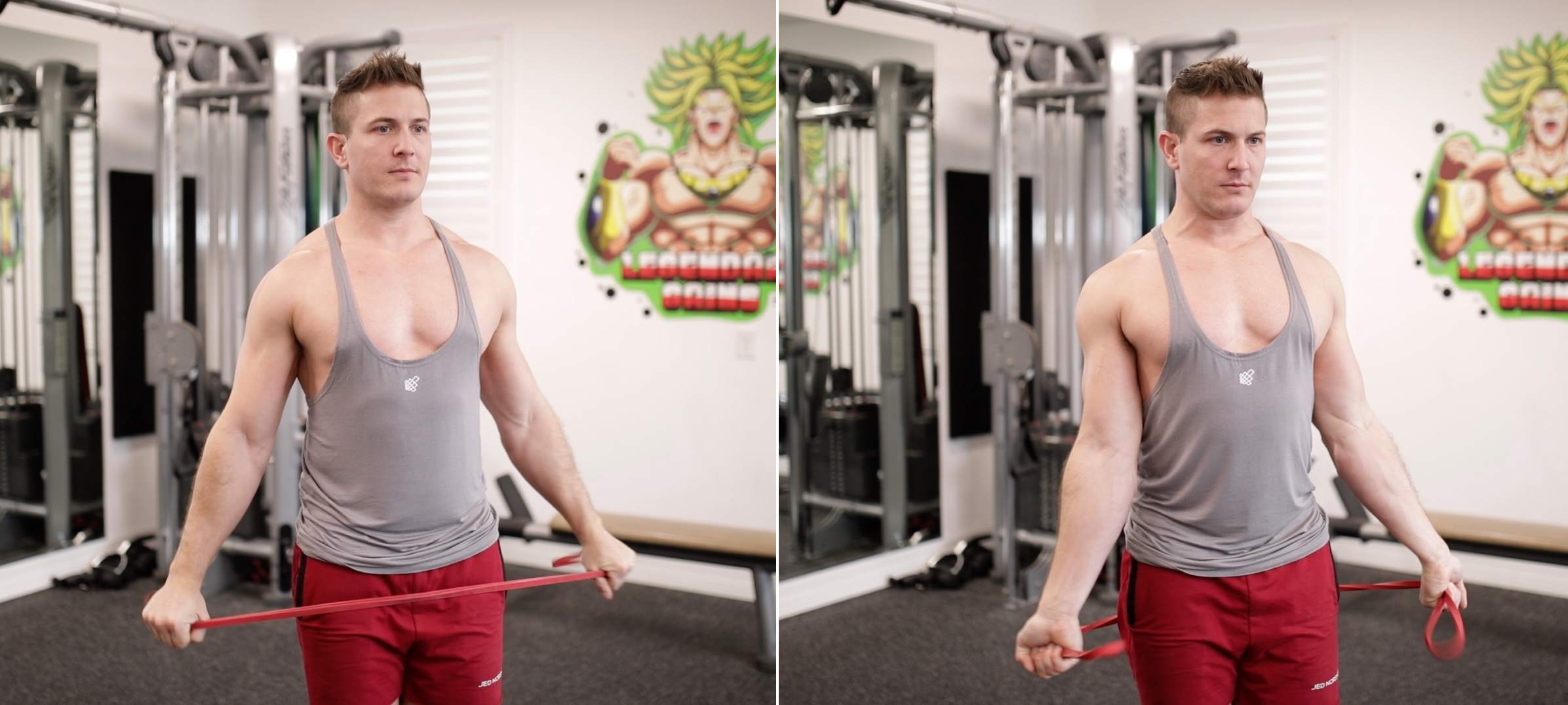
Now, if you don’t have access to a band or the dumbbells make your shoulders uncomfortable, try these bodyweight variations instead. Just perform each movement for 2 sets of 15 – 20 seconds and remember the goal isn’t SPEED… it’s “feeling” the area loosen up.
1. Internal / External Rotation
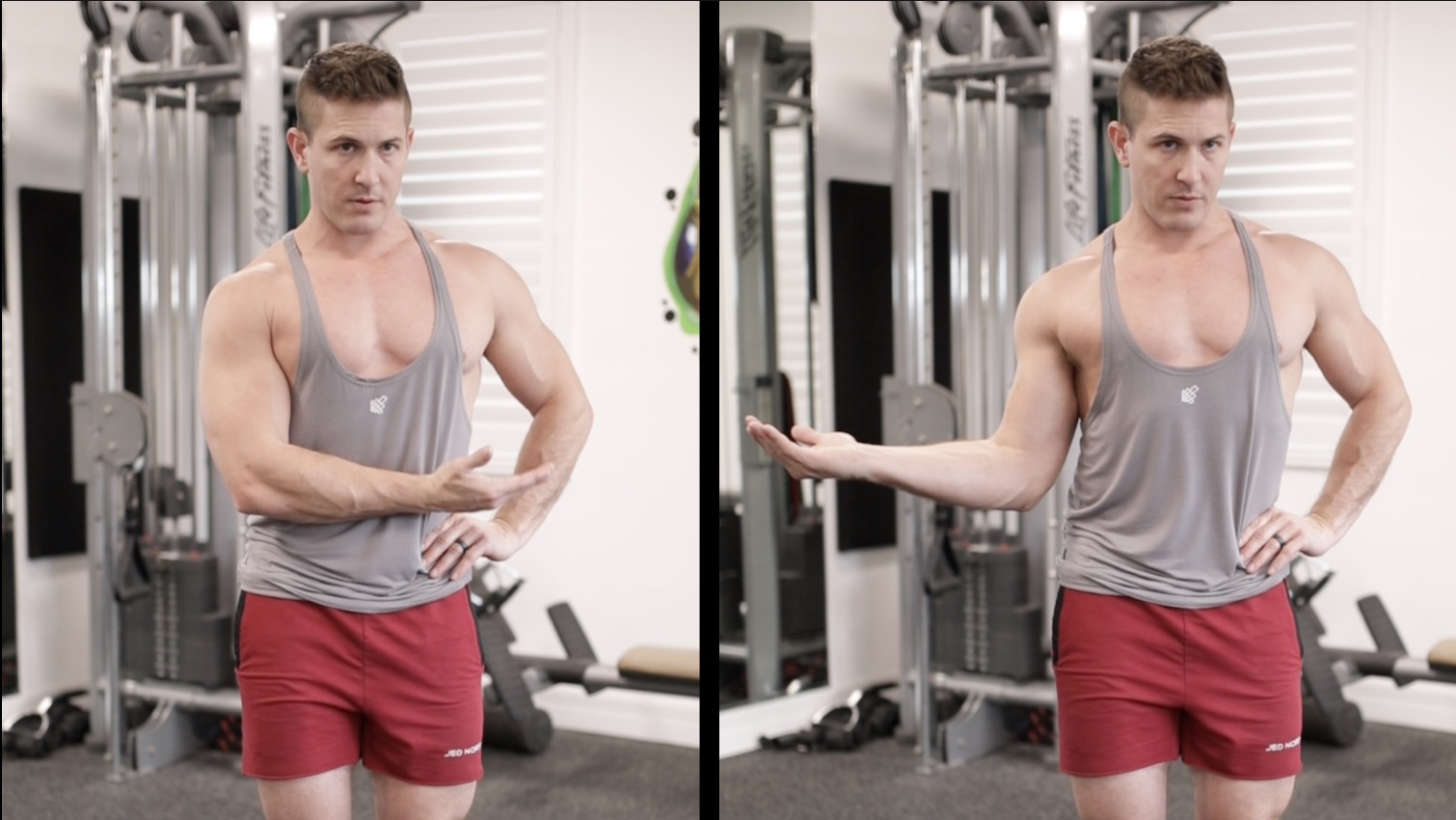
2. Running Man
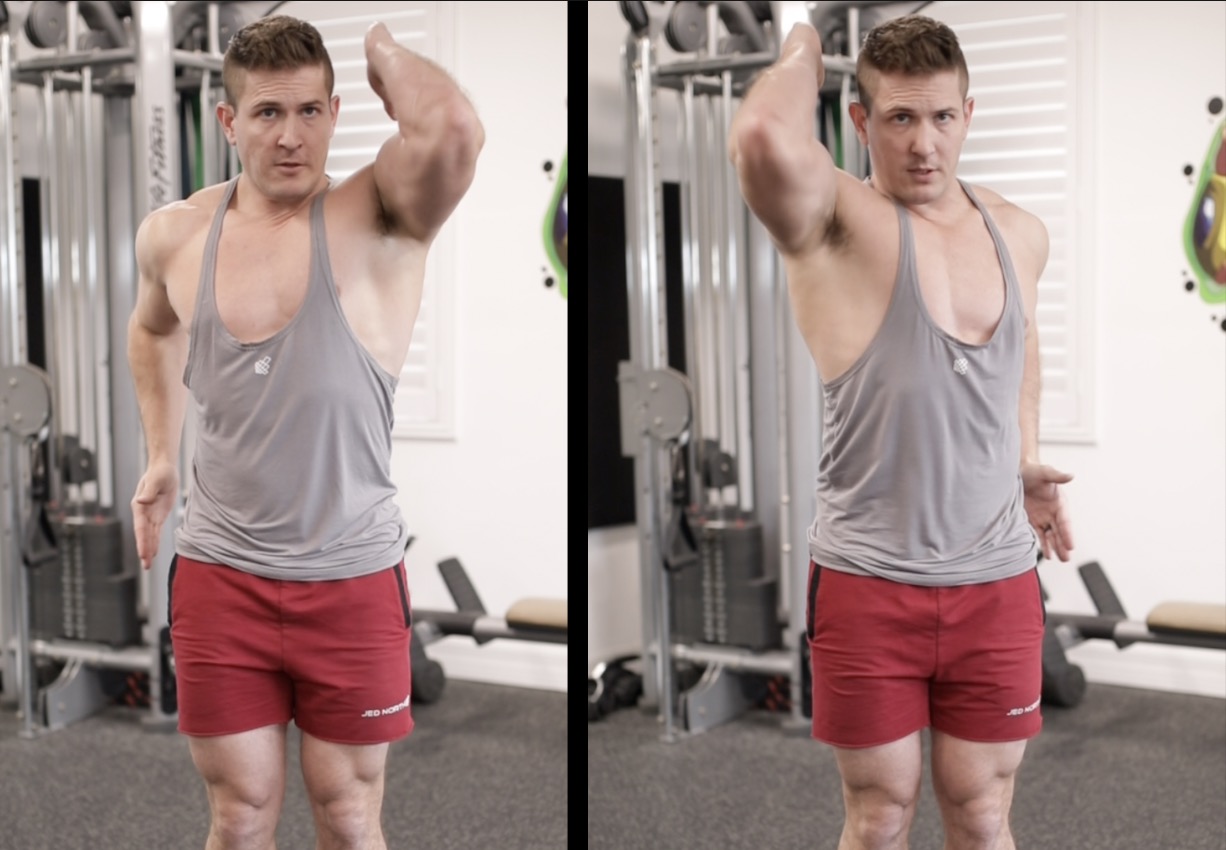
3. Front-To-Back Shoulder Flap
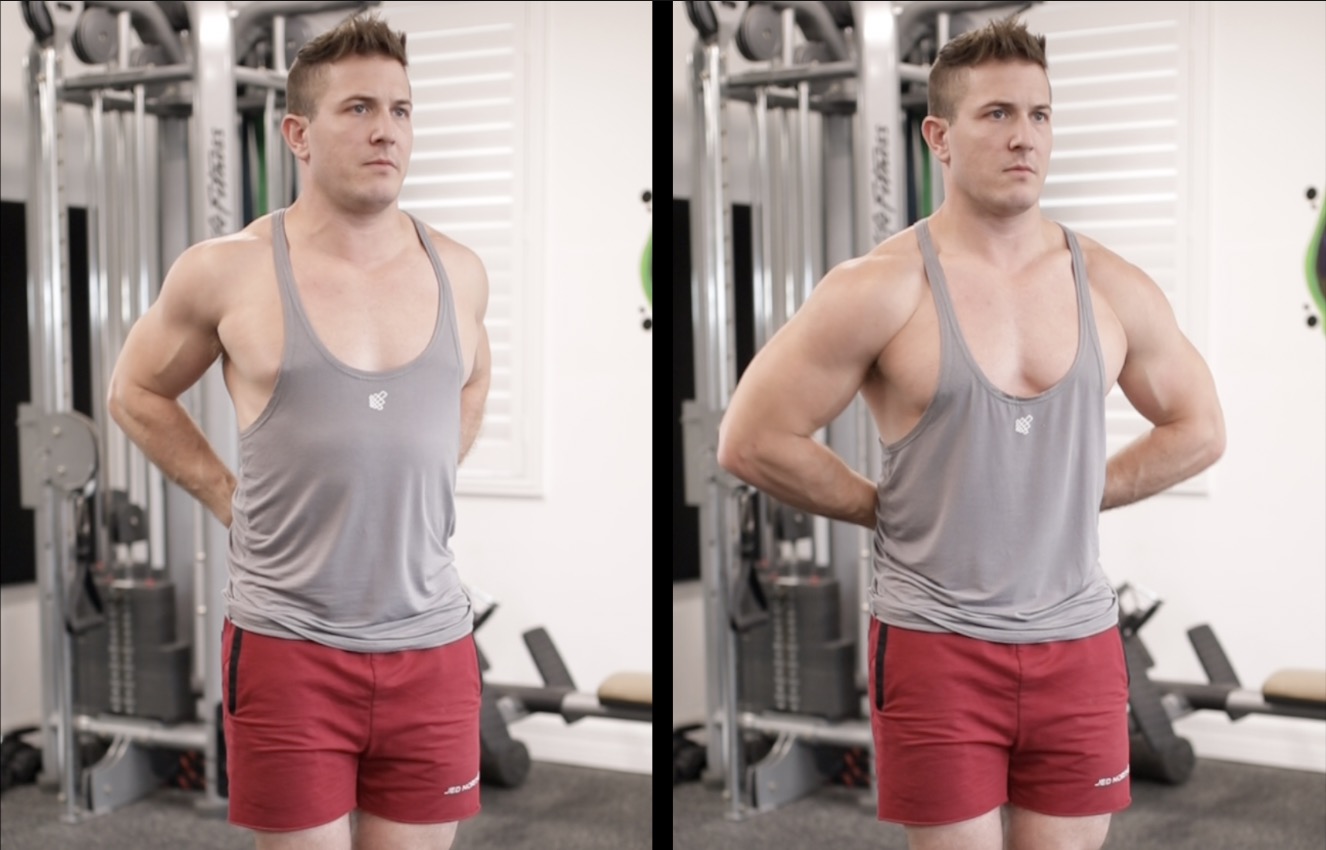
Also, keep in mind guys that even when performing your working sets of bench, it’s 100% ok to repeat any of these warm-ups during your rest period if you’re still feeling tight.
TIP #2 - Lower The Weight For Your Working Sets
This is an obvious tip, but usually what’s most neglected. You can’t expect to fix your form working with the same weight you train with because if you’re half reppin’…whatever range of motion you’ve been “skipping” just isn’t ready to handle your current working weight.

So, what I want you to do is break down your working weight to something you can rep out about 15 – 20 times. This way the weight is heavy enough to get your chest fibers to activate under a working load while we start to correct your form.

This is also important because we DO want to try to use the weight of the barbell to help us get lower on the reps so we can FEEL the stretch, but in a SAFE way.
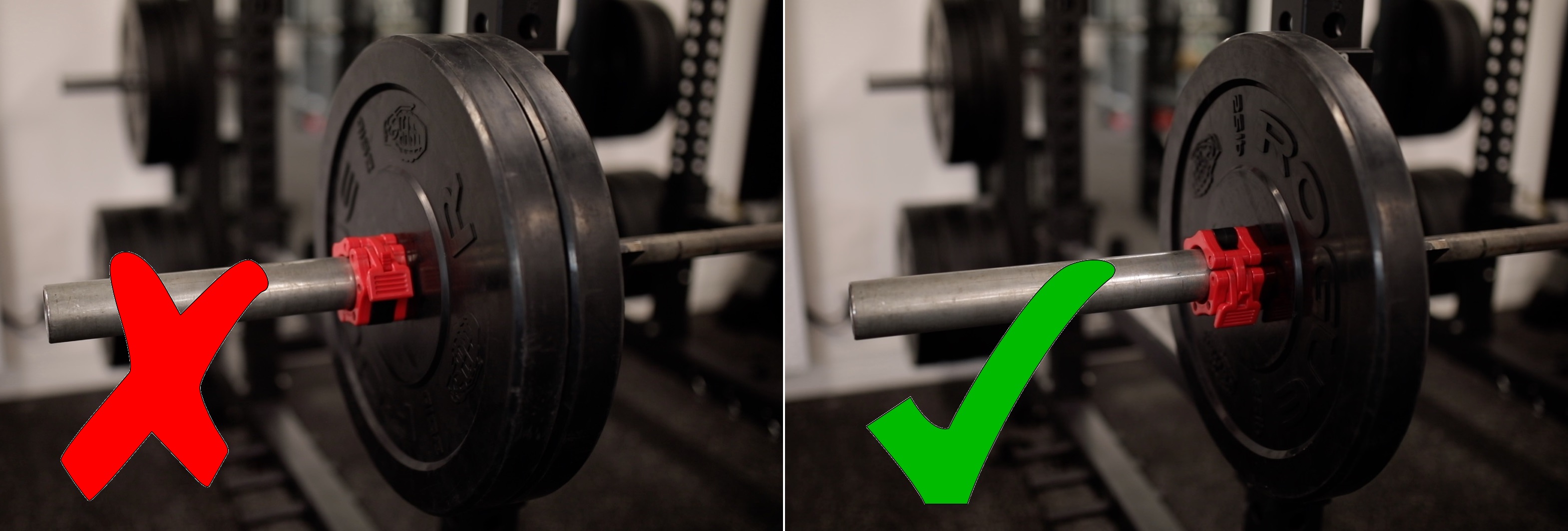
TIP #3 - Re-establish The Correct Bar Path While Benching
For the majority of you, I’m willing to bet the main reason your shoulders hurt when you bench and the reason why you’re half reppin’ is because you’re benching TOO HIGH. This means that instead of bringing that barbell down over the meat of your chest, your shoulders are flared out and the barbell is more over your upper chest and shoulders as you descend.

Now, there are a few reasons why this could be happening, but 99% of the time it’s because your shoulders are becoming “unpacked” when you un-rack the weight. So you might be getting into perfect bench form at the start of the lift, but in order to un-rack the weight, without realizing it, you’re unpacking your shoulders to push the barbell up and over the j-hooks.

Then, from here, you’re either NOT repacking your shoulders OR you’re unable to pack them correctly and by “pack them correctly” I mean you’re able to not only RETRACT but also DEPRESS your shoulders.

So, before you even load the barbell with weight, whether flat or incline benching, make sure the bench is positioned correctly so that you can easily un-rack the barbell and your shoulder position doesn’t change.

Then, from here it’s just going to take a bit of time and patience and you should expect to feel weak as your body learns to push heavier weights through that bottom range of motion you’ve been skipping out on. But after a 6 – 8 weeks I guarantee you’ll either be back at your normal working weight, or already starting to increase it.
Remember that Ryan’s injury happened for a lot of reasons. He isn’t a powerlifter, what he was trying to lift was already A LOT heavier than his previous MAX, his range of motion was flawed from the start and most importantly Ryan is a young guy. He is only 23 years old at 330lbs. So he’s been on gear for quite some time and at some point the strength of your muscles will outpace the strength of your tendons when growing as fast as him.
That’s very different from you feeling a bit tight on your working sets because you need some mobility work. So don’t stress about it and as long as you apply these three tips you’re going to be just fine. But if you’re still worried, upload a video of your bench press form to YouTube and post it in my forums. I’ll be more than happy to critique your bench press if it means helping you avoid an injury.







